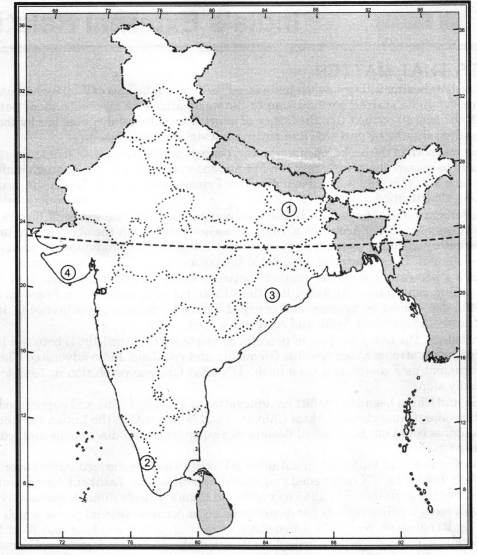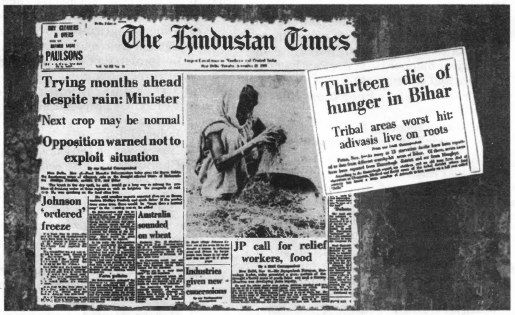Politics of Planned Development Class 12 Political Science Extra Questions. myCBSEguide has just released Chapter Wise Question Answers for class 12 Political Science. There chapter wise Practice Questions with complete solutions are available for download in myCBSEguide website and mobile app. These Questions with solution are prepared by our team of expert teachers who are teaching grade in CBSE schools for years. There are around 4-5 set of solved Political Science Extra Questions from each and every chapter. The students will not miss any concept in these Chapter wise question that are specially designed to tackle Board Exam. We have taken care of every single concept given in CBSE Class 12 Political Science syllabus and questions are framed as per the latest marking scheme and blue print issued by CBSE for class 12.
Class 12 Political Science Chapter 3 Extra Questions
Class 12 Political Science Politics of Planned Development
Class 12 – Political Science(Ch-3 Politics of Planned Development)
- In which year did Hazari committee submitted the report?
- 1977
- 1966
- 1967
- 1978
- What is ‘Development’?
- What is Plan Holiday?
- What was the main objective of the second Five Year Plan?
- What are the objectives of planning?
- Differentiate between the capitalist and socialist models of development.
- Which state was prone to food crisis in the early years of independence?
- What were the key controversies regarding development in India?
- How was the Planning Commission of India set up? Mention its scope of work.
- What do you know about land reforms in India during planning period?
- On a political outline map of India locate and label the following and symbolise them as indicated:
Questions- The state prone to food crisis during independence days.
- The state adopted decentralisation.
- The state where people protested against POSCO plants.
- The state where White Revolution took place.
- Study the picture (NCERT Textbook, page 59) given below and answer the questions that follow:
Questions- About which state the clipping is talking about?
- What is food-crisis?
- What were the main reasons for food crisis?
- Is India now sufficient in food production?
- What was the major thrust of the First Five Year Plan? In which ways did the Second Plan differ from the first one?
Class 12 – Political Science (Ch-3 Politics of Planned Development)
Answer
-
- 1967
Explanation: Hazari committee submitted its report in 1967. Committee was formed for the investigation of licensing policy. Many defects were found in it.
- 1967
- Development refers to the growth of an individual, society, a nation or entire world in terms of both economic and non economic activities in reference of industrialisation and modernisation is being judged by the improvements in the quality of life.
- The government took plan holiday in 1966 when the Fourth Year Plan was due to start. It was taken due to actue economic crisis.
- Plan Holidays is a gap between two five years plan, i.e. 1979-1980 and 1990-92.
- It was a stop gap arrangements by the provisions of annual plans.
- Plan holidays took place due to change in government to be Iocked in development goals and priorities etc.
- Those five year plans were supposed to be reviewed and changed by the succeeding government.
- The second Five Year Plan stressed on heavy industries. Its main objective was quick structural transformation by rapid industrialisation.
- The objectives of planning are:
- Economy Growth.
- Attaining economic self reliance and self generating through planned strategies.
- To activate distributive justice among various sectors of economy.
- Achieving full employment.
- The capitalist model of development in which development was left entirely to the private sector in place of social welfare. The Capitalist affords economic freedom, consumer choice, and economic growth.The socialist model of development in which private property was abolished and all the production was controlled by the state. It aims at the public sector, planning to establish an egalitarian society. The Socialist model provides greater social welfare and decreases business fluctuations.
- Bihar was prone to food crisis in the early years of independence:
- State faced a near-famine situation.
- The food shortage was significant in all districts of Bihar, with 9 districts producing less than half of their normal output.
- Food deprivation led to acute and widespread malnutrition.
- The government had “zoning” policies that prohibited trade of food across states; this reduced availability of food in Bihar dramatically.
- The key controversies regarding development in India were, that the eve of Independence, India had before it, two models of modern development: the liberal-capitalist model as in Europe and the US and the socialist model as in the USSR. These two ideologies fuelled the ‘cold war’ between the two superpowers. The nationalist leaders were clear that the economic concerns of the Government of free India would have to be different from the narrowly defined commercial functions of the Colonial Government. It was clear that the task of poverty alleviation and socio-economic redistribution was being seen primarily as the responsibility of the Government. These differences could not be solved. Elements from both these models were taken and mixed together in India.
- The Planning Commission was set-up in March 1950 by a simple resolution passed of the Government of India. It has an advisory role and its recommendations become effective when the Union Cabinet approved these.
Scope of Work of Planning Commission: The resolution which set-up the Commission defined the scope of its work in the following terms:- It has guaranteed certain Fundamental Rights to the citizens of India.
- It has enunciated certain Directive Principles of State Policy in particular.
- The state shall strive to promote the welfare of the people by securing and protecting a social order in which justice, social, economic, and political shall direct its policy towards securing among other things.
- Land reforms in India during planning period were as:
- Abolition of the colonial system of zamindari. this bold act not only released land from the clutches of a class that had little interest in agriculture, but it also reduced the capacity of the landlords to dominate politics.
- Lands were consolidated to bring small pieces of land together in one place so that the farm size could become viable for agriculture.
Drawbacks:
- The laws were made to put an upper limit or ‘ceiling’, to how much agricultural land one person could own, people with excess land managed to evade the law.
- The tenants, who worked on someone else’s land were given greater legal security which rarely implemented.
- Landowners were very powerful and wielded considerable political influence.
-
- The state prone to food crisis during independence days is Bihar
- The state that adopted decentralisation is Kerala
- The state where people protested against POSCO plants is Orissa
- The state where the White Revolution took place is Gujarat
- 1. The clipping is talking about Bihar.2. Food crisis is the unavailability of sufficient food or food shortage.3. The main reasons for food crisis were:
- High prices of food items.
- Zoning policy of government.
4. Yes, India is now sufficient in food production, due to the Green Revolution. Food grain production has been increased upto maximum extent.
- The First Five Year Plan aimed at getting the country out of the cycle of poverty. Its thrust was on agrarian sector including investment in dams because the agricultural sector was hit hardest by partition and needed immediate attention.Positive Consequences:
- The stark contrast between the poor peasantry and the landlords produced conditions favourable for leftwing organisations to organise the poor peasants.
- The green revolution also resulted in the rise of what is called the middle peasant sections. These were farmers with medium size holdings, who benefited from the changes and soon emerged politically influential in many parts of the country.
Negative Consequences:
- Only the rich peasants and the large landholders were the major beneficiaries of the process. This created a stark contrast between the poor peasantry and the landlords.
- The green revolution delivered only moderate agricultural growth. Some regions like Punjab, Haryana and western Uttar Pradesh became agriculturally prosperous, while others remained backwards.
The Second five-year plan differed from the first plan in the following ways:
- The Second Five Year plan stressed on heavy industries in place of agriculture.
- If the First Five Year Plan had preached patience, the second Plan wanted to bring about quick structural transformation by making changes simultaneously in all possible directions.
- The push for industrialisation marked a turning point in India’s development in the Second Five Year Plan.
Chapter Wise Extra Questions of Class 12 Political Science
Contemporary World Politics
- The Cold War Era
- The End of Bipolarity
- US Hegemony in World Politics
- Alternative Centres of Power
- Contemporary South Asia
- International Organisations
- Security in the Contemporary World
- Environment and Natural Resources
- Globalisation
Political Science-II

Test Generator
Create question paper PDF and online tests with your own name & logo in minutes.
Create Now
Learn8 App
Practice unlimited questions for Entrance tests & government job exams at ₹99 only
Install Now
